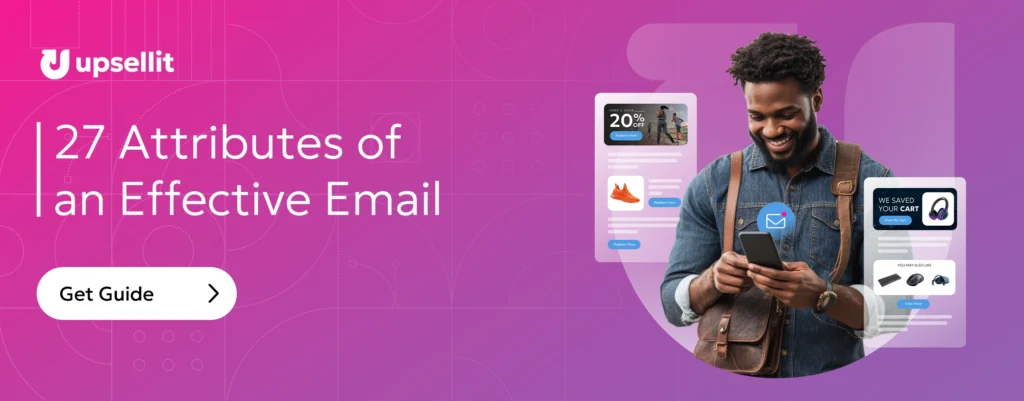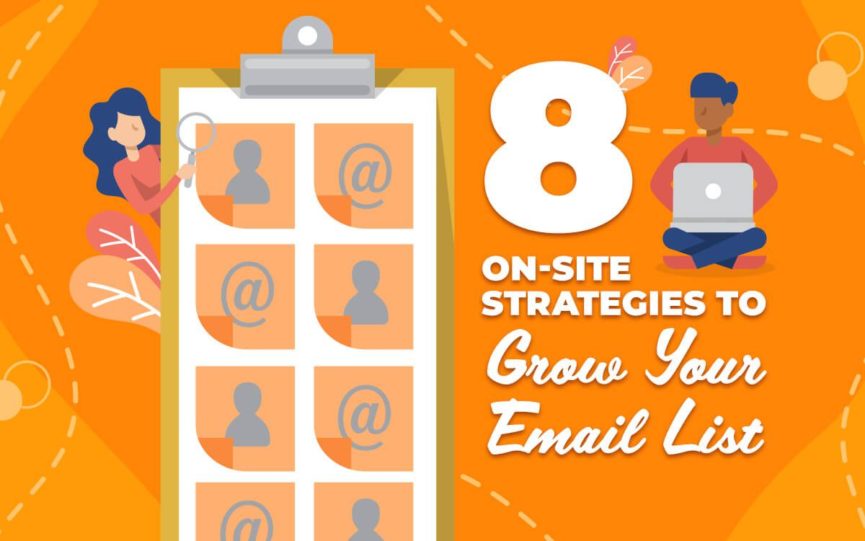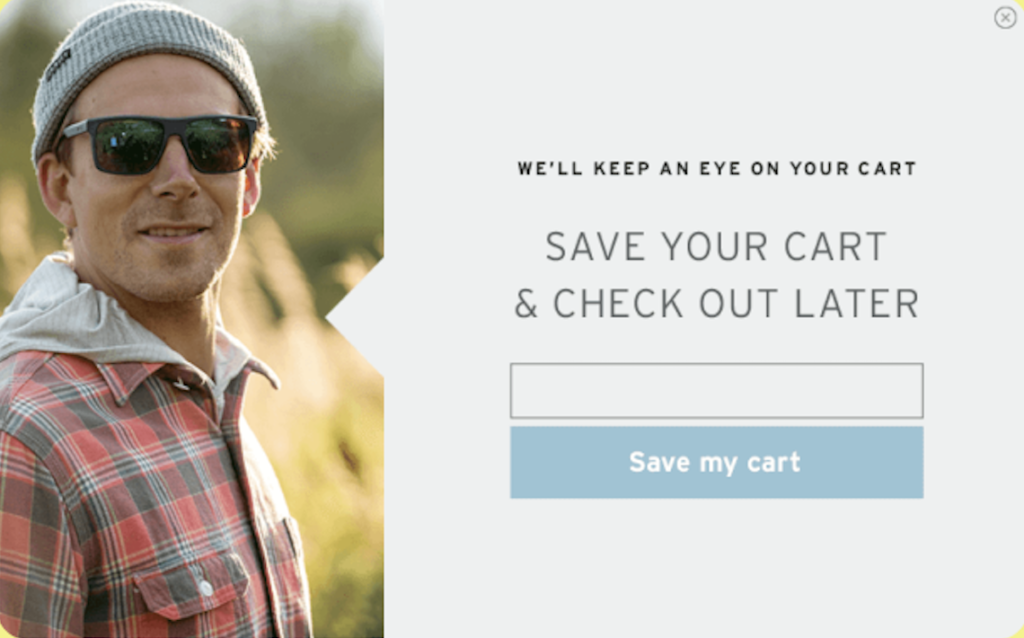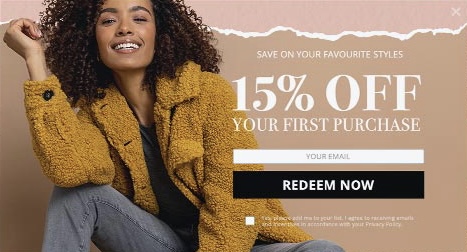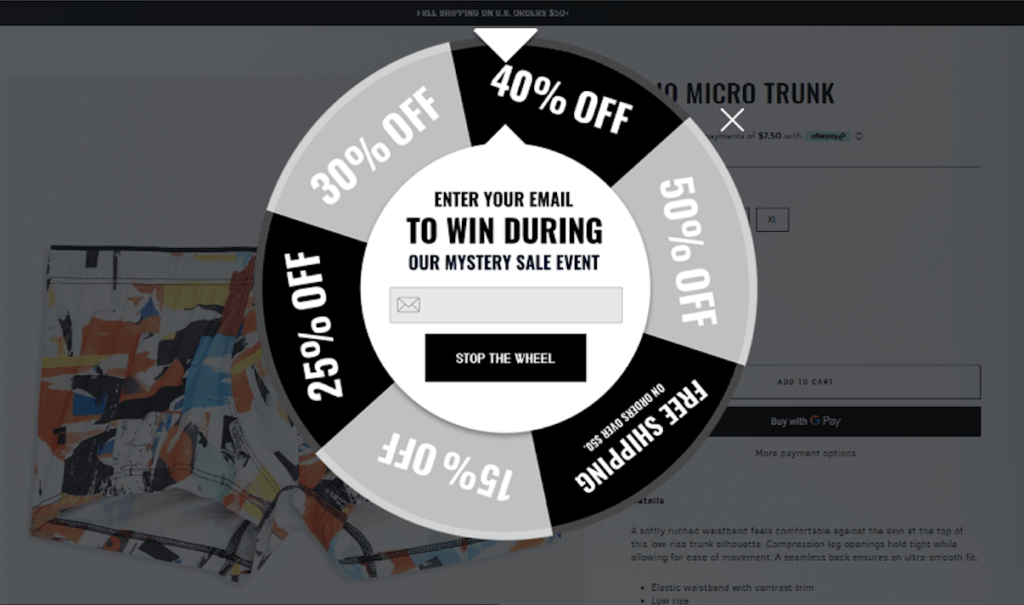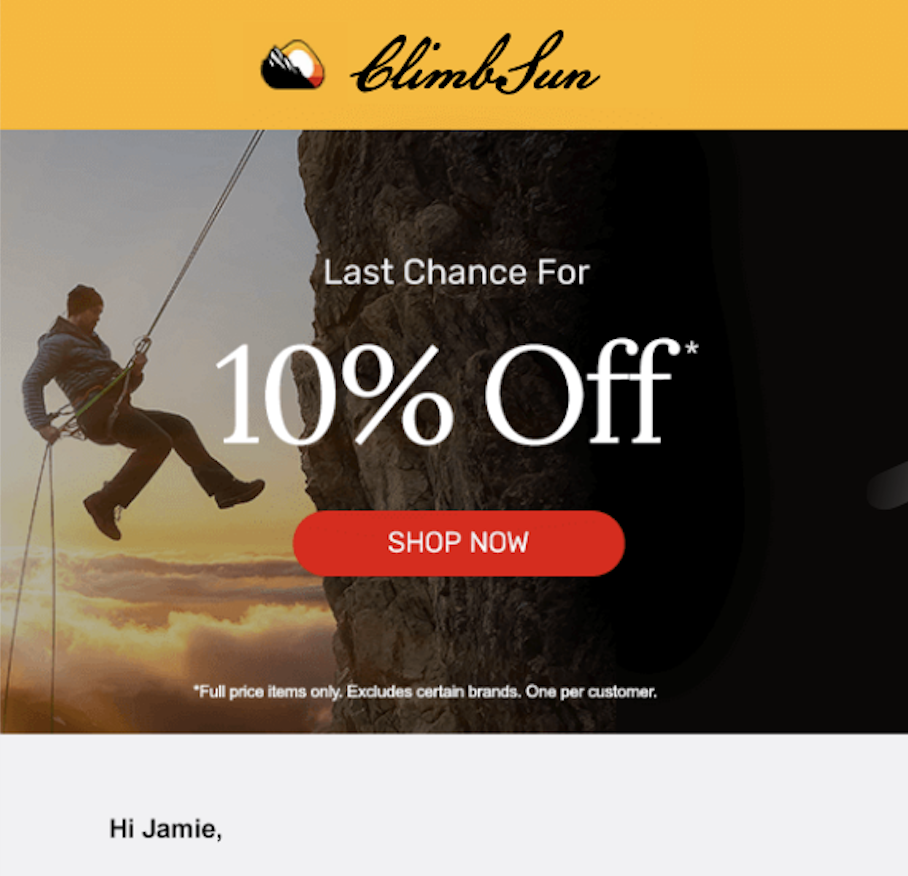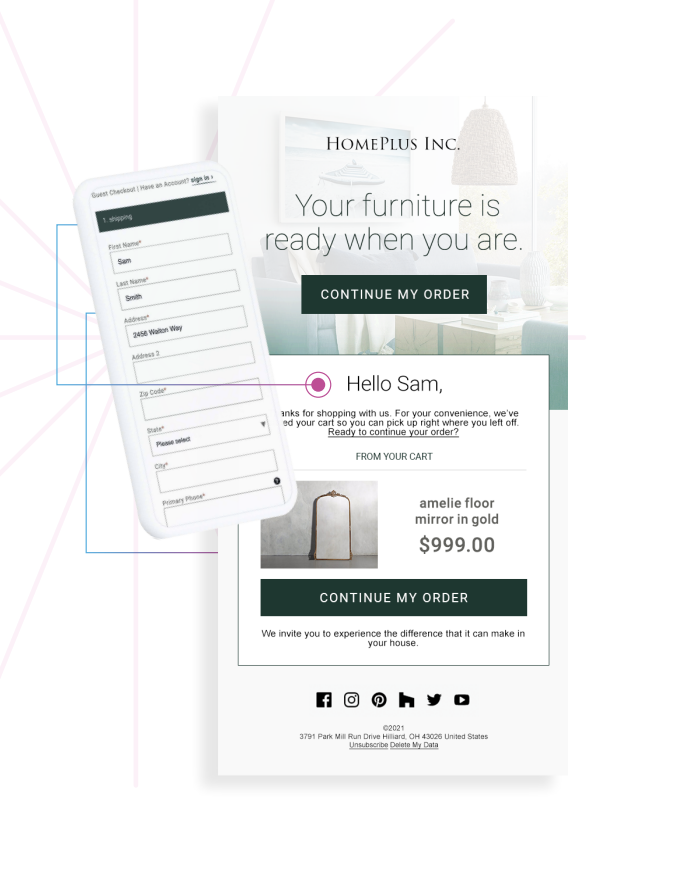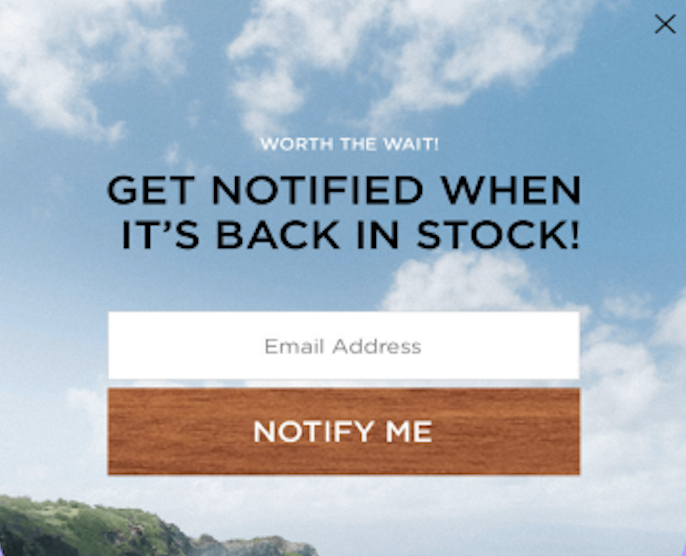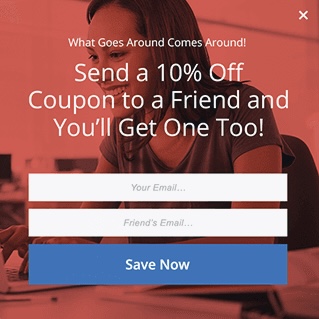The Importance of Growing Your Ecommerce Email List
Although generating conversions will always be a main goal, leads are a crucial part of building brand awareness while paving the way for future conversions down the road. With over 4 billion email users worldwide, 60% of consumers report making a purchase after receiving a promotional email. Furthermore, 95% of consumers check their email every day.
While on-site strategies are an important part of an optimized conversion strategy, the vast majority of users won’t convert on their first visit to your site. That’s not because your strategies are ineffective, it’s because most ecommerce shoppers browse with relatively low intent. With so many shoppers visiting websites just to browse, it’s important to implement conversion strategies on and off-site to influence potential customers’ decisions.
How Can You Grow Your Email List and Combat Low Intent Shopping?
When a shopper signs up for your email list, it means they have an interest in who you are and what you offer, even if they don’t convert. Having a shopper’s contact information enables you to email them in any number of circumstances.
For instance, a great email list gives you the ability to effectively promote a new product line or send personalized recommendations. You can alert shoppers of sales and discounts, or even just a new blog post. Personalized remarketing messages and lifecycle emails can foster customer loyalty and generate repeat purchases for years to come.
The most successful Lead Capture strategies are those that leverage the interest of a shopper, even if the purchase intent is low, and parlay that into a successful lead. Let’s take a look at 8 on-site strategies that will engage your audience, fight low intent shopping, and grow your email list.
8 On-Site Strategies to Grow Your Email List
1. Save Shopper’s Carts for Later
As we all know, just because a user adds something to their cart does not mean that they’re committed to buying it in the current session. Many users treat the cart as a place to keep products that they’re interested in, as opposed to products they want to purchase immediately.
That means that while the user may not want to buy everything in their cart, the cart is still a helpful organizational shopping tool. That’s where a Cart Preserver tool can come in handy.
By offering to save a user’s cart for later, you’re effectively allowing them to save their progress. This lets shoppers pick up where they left off from any device, creating an omnichannel experience that helps continue the conversation and remarket in a way that’s helpful and organic.
2. Offer a Small Incentive
Incentivized lead captures remain popular because it’s simple and effective. Since the user is giving you something of value (their email address), giving them something of value in return helps make this exchange feel equitable.
Incentives do not need to be large to be effective. Offering a 10 to 15 percent discount or Free Shipping can be enough to get a user off the fence and onto your email lists. From there, you can leverage that incentive and remind users to redeem their offer in a series of marketing emails. As always, it’s wise to A/B test the incentives on your sign-up forms to determine which offers you the greatest ROI.
3. Gamify the Experience
If you’re planning to use incentivized lead capture, gamification can be a great way to increase the effectiveness of these strategies. Gamified lead capture often involves allowing users who sign up for your list to play a game of chance for an incentive. While these games are often a wheel or spinner, other games involving cards, bingo, and lottery tickets are popular too.
The incentive can be fixed to offer shoppers the same discount every time, or it can be set to distribute certain prizes at certain rates. This allows you to offer a relatively large incentive as a potential prize without requiring you to give it out frequently. Large incentives can be reserved for a few lucky players, while still offering smaller incentives to all new email subscribers.
4. Offer Exclusive Discounts & Updates
While incentives are a great way to engage an audience, it’s not always feasible to offer a discount to everyone joining your email list immediately, especially if you’re a small business. If you can’t give the visitor an incentive off the bat, you can offer them exclusive deals in the future. This helps visitors get excited about joining your email list without requiring an instant promotion.
This also helps people get to know your brand, and they’ll be engaged to look out for special offers. Just be sure to follow through with the proposed special offers within a decent timeline, otherwise, you’ll lose trust and brand loyalty. It’s worthwhile to send shoppers on your mailing list special offers, discounts, and/or sale information from time to time to keep them from clicking unsubscribe.
5. Promote Your Newsletter
Offering to sign a user up for your newsletter is one of the simplest, least expensive, while still effective methods for lead generation. Newsletters have been the bread and butter of long-form brand communications for decades. These publications are a great way to get people involved and encourage users to see everything you have to offer.
Newsletters can be an effective lead capture tool because they leverage interest rather than purchase intent. For example, a user may be interested in your site and products, but not be ready to make a purchase. While they have high interest, they have low intent.
A newsletter allows shoppers to get to know you. After you’ve built a relationship, they’ll be further in the consideration stage and you can bring them back into the funnel on the path to conversion.
6. Offer Price Drop Alerts
As a strategy, Price Drop Alerts offer the best of both worlds: a convenient way to combat price sensitivity while not requiring an extra incentive. Price Drop Alerts initially became popular in the travel industry, but they’ve since become a widely used tool that leverages natural price fluctuations to convert users in a variety of scenarios.
Since Price Drop Alerts are highly personal, they can make a larger sale feel like a special offer created exclusively for the recipient. In addition, Price Drop Alerts are an easy way to determine the kind of products that a customer is interested in, allowing you to improve your recommendations and further tailor your marketing strategy.
7. Send Back in Stock Notifications
An out-of-stock item is traditionally viewed as a lose-lose situation. Shoppers can’t get the item they want and you miss out on sales. Back in Stock Notifications turn an out-of-stock product into an opportunity, all without providing a discount.
When an item is out of stock, simply offer to email the shopper as soon as it’s back in stock. In addition to gathering a new email signup, you’ll be personalizing the shopping experience and building a relationship with the user, even if they’ve never purchased from you before.
8. Have Users Refer a Friend
One of the most effective forms of marketing is Word of Mouth. Trust goes a long way, and Refer-a-Friend programs allow you to combine remarketing with the powerful influence friends and family have on each other. While this form of lead capture generally requires an incentive, it maximizes the value of the engagement by combining the discount with trusted recommendations.
To start, simply offer a current customer an incentive for their next purchase if they’ll refer a friend. Generally, the referral should include the same incentive for the person being referred, usually a small discount. After they enter their friend’s email, be sure to include the friend’s name in the email you send to the new lead. This prevents the new lead from wondering why they’re getting the message.
While refer-a-friend programs are popular and effective, they’re generally not compliant with email regulations in the EU, Canada, and the UK. For that reason, it’s best to keep referral programs limited to the U.S.
Best Practices for List Building in Ecommerce
Although no strategy is one-size-fits-all, prioritizing personalization will guide your shoppers back on the path to conversion. Behavior-based marketing is an excellent way to help shoppers through the funnel while adding value to their experience instead of interrupting it. Utilize the power of Artificial Intelligence through dynamic messaging, segmentation, and A/B testing to unlock the best results for your brand.
Before launching a new campaign, we recommend you review our Global Guide to Email Compliance to ensure your ideas are in line with regulations. For more information on implementing any of these email strategies, contact us at hello@upsellit.com.
Ready to do More with Email Marketing?
Now that you have the best lead capture strategies for your campaign, it’s time to dive into the contents of your email strategy. From subject lines to design, unlock the best practices for your email campaign to build loyal customers and increase conversions. Download Upsellit’s 27 Attributes of an Effective Email and get your emails ready to confidently hit send.
